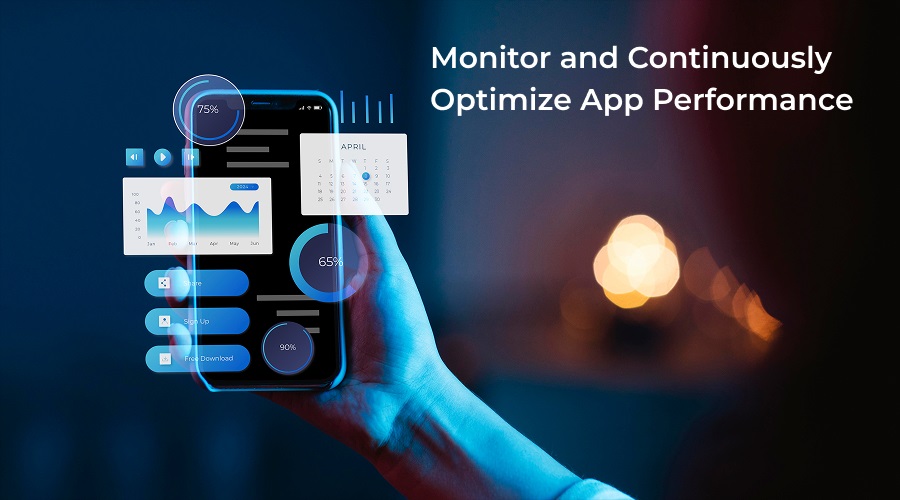
You are building an app that could explode in popularity overnight. The question is not if you will need to scale its when. Building scalable apps from the ground up saves you from the nightmare of crashing servers, frustrated users and lost revenue when your user base suddenly jumps from hundreds to hundreds of thousands.
Preparing for 1 million users is not just about throwing more servers at the problem. You need a strategic approach that touches every aspect of your application from infrastructure to user experience. I have seen too many developers scramble to patch together solutions when their apps gain traction only to watch user growth stall because of poor app performance and reliability issues.
The difference between apps that thrive under pressure and those that crumble comes down to intentional design choices made early in development. You need to think about scalability before you need it not after your app starts buckling under load.
Table of Contents
- 5 Actionable Steps to Build Scalable App
- Define Your Unique Selling Proposition (USP) and Understand User Growth Factors
- Assess Current Infrastructure and Identify Bottlenecks
- Implement Scalable Infrastructure and Architecture
- Manage User Growth with Data Consistency and Security
- Monitor and Continuously Optimize App Performance
- Additional Technical Best Practices for Scalability
5 Actionable Steps to Build Scalable App
This guide breaks down the process into 5 actionable steps that address the critical components of scalable apps. Let’s dive into each step so you can build an app ready for explosive user growth.:
Step 1: Define Your Unique Selling Proposition (USP) and Understand User Growth Factors

Before you write a single line of code you need to answer one critical question: Why would someone choose your app over the hundreds of alternatives? Your USP is the foundation of user growth.I have seen countless technically brilliant apps fail because they could not articulate what made them special.
Your USP should solve a specific pain point better than anyone else. Take Notion they did not just create another note-taking app. They positioned themselves as an all-in-one workspace that replaced multiple tools. That clear value proposition drove their explosive growth.
Effective marketing amplifies your USP. You can build the most scalable infrastructure in the world but without users it is meaningless. I recommend focusing on these growth channels:
- Content marketing that demonstrates your unique value
- Social proof through user testimonials and case studies
- Strategic partnerships with complementary platforms
- Community building around your core features
Your UI design directly impacts user retention. An engaging UI is not just about aesthetics its about creating an intuitive experience that guides users to value quickly. Clear navigation, consistent design patterns and responsive interactions keep users coming back. Duolingo mastered this with their gamified interface that makes language learning addictive.
Personalized experiences powered by AI/ML transform casual users into loyal advocates. Netflix does not just recommend random content; their recommendation engine analyzes viewing patterns to create a unique experience for each subscriber. You can implement similar personalization through:
- User behavior tracking and analysis
- Predictive algorithms for content recommendations
- Dynamic interface adjustments based on usage patterns
- Automated A/B testing to optimize conversion flows
Step 2: Assess Current Infrastructure and Identify Bottlenecks
Before you scale your app to handle millions of users you need to understand exactly what you are working with right now. Infrastructure assessment is not just a technical formality it is the foundation that determines whether your scaling efforts will succeed or crumble under pressure.
➢ Take Inventory of Your Existing Resources
Start by taking inventory of your existing hardware and software resources. Document your current server specifications, database configurations, network bandwidth and storage capacity. You will want to know the exact limits of what your system can handle today. I have seen too many developers skip this step and pay for it later when their app crashes during a traffic spike.
➢ Run Load Testing to Identify Weak Points
Your bottlenecks are hiding in plain sight waiting to sabotage your growth. Consider using tools like Apache JMeter or Gatling for effective load testing. These tools simulate heavy traffic conditions, pushing your system beyond its comfort zone thats where you will discover the weak points. Watch for:
- Database query response times that spike under concurrent user loads
- Memory consumption patterns that indicate potential leaks
- API endpoints that slow down when processing multiple requests
- Network latency issues between different components of your stack
The performance limitations you identify now will save you from catastrophic failures later. I learned this the hard way when an app I worked on went viral overnight. We had not tested our database connection pool limits and the entire system ground to a halt at just 10,000 concurrent users.
➢ Simulate Realistic Conditions for Testing
Testing under realistic conditions means simulating not just traffic volume but also the actual user behaviors you expect. Your readiness assessment should answer one critical question: where will your system break first?
Step 3: Implement Scalable Infrastructure and Architecture

You have identified your bottlenecks now its time to build the foundation that will carry your app to 1 million users and beyond. Scalable infrastructure is not just about adding more servers; its about creating a system that adapts intelligently to demand.
➢ Cloud Platforms: Your Flexibility Advantage
Cloud services like AWS, Google Cloud Platform or Microsoft Azure give you the resource allocation flexibility you need. You can spin up additional computing power in minutes rather than waiting weeks for physical hardware. I have seen apps handle traffic surges during product launches simply because they leveraged cloud platforms that allowed them to scale resources on demand. You are not locked into fixed capacity you pay for what you use when you use it.
➢ Load Balancing: Distributing the Weight
Load balancing acts as your traffic director, spreading incoming requests across multiple servers. You prevent any single server from becoming overwhelmed while others sit idle. Tools like NGINX, HAProxy or cloud-native load balancers ensure your users experience consistent response times regardless of which server handles their request.
➢ Auto-Scaling: Dynamic Response to Demand
Auto-scaling mechanisms monitor your apps performance metrics and automatically adjust resources based on real-time traffic patterns. When you experience a sudden spike say from a viral social media post your infrastructure responds without manual intervention. You set the rules and the system handles the execution.
➢ Microservices: Independent and Modular
Microservices architecture breaks your application into smaller independent services. Each service handles a specific function user authentication, payment processing, content delivery. You can scale individual components based on their specific demands rather than scaling your entire monolithic application. When your payment service needs more resources during a flash sale, you scale only that service.
Step 4: Manage User Growth with Data Consistency and Security
Your infrastructure might handle millions of requests but without proper data consistency and security measures you are building on shaky ground. As your user base grows, maintaining data integrity becomes exponentially more challenging.
➢ Ensure Data Reliability with Replication Strategies
Replication strategies form your first line of defense against data loss. You need to implement multi-region replication across your database systems. I have found that using a primary-replica setup with at least three copies of your data across different geographical locations provides the reliability you need. When one server fails your application seamlessly switches to another replica without users noticing any disruption.
➢ Protect Your Data with Backup Solutions
Backup solutions require a layered approach:
- Automated daily backups with point-in-time recovery capabilities
- Weekly full backups stored in separate cloud regions
- Monthly archival backups for compliance and historical data
- Regular backup restoration tests to verify data recoverability
➢ Resolve Conflicts Effectively
Conflict resolution becomes critical when multiple users modify the same data simultaneously. You need to implement version control mechanisms and timestamp-based conflict detection. Last-write-wins strategies work for simple cases but you will want custom merge logic for complex data structures where user intent matters.
➢ Implement Robust Security Measures
Security measures can not be an afterthought. You must implement end-to-end encryption for data in transit using TLS 1.3 and encrypt data at rest using AES-256. Role-based access control (RBAC) ensures users only access data they are authorized to see. Multi-factor authentication adds another security layer especially for sensitive operations.
➢ Validate Inputs at Multiple Levels
Validation processes should happen at multiple levels client-side for user experience, server-side for security and database-level for data integrity. You need to sanitize all inputs to prevent SQL injection and cross-site scripting attacks that could compromise your entire system.
Step 5: Monitor and Continuously Optimize App Performance

Real-time monitoring changes how you understand your apps behavior under actual user conditions. You need visibility into whats happening right now not just historical data from yesterdays reports.
➢ Choose the Right Monitoring Tools
Setting up comprehensive monitoring tools starts with choosing the right platforms for your needs. Google Analytics provides essential insights into user behavior patterns, session durations and conversion funnels. You will track how users navigate through your app where they drop off and which features drive the most engagement. Pair this with logging systems that capture technical performance data response times, error rates, database query speeds and API latency.
➢ Use Detailed Logs to Identify Performance Issues
The power of detailed logs becomes clear when you are trying to find performance problems. You can follow a single user request through your entire system architecture, pinpointing exactly where delays happen. Your logs should capture:
- API endpoint response times
- Database query execution duration
- Memory usage patterns across services
- Network latency between microservices
- Error stack traces with contextual information
➢ Analyze Data and Make Targeted Improvements
Performance optimization is not a one-time task its an ongoing discipline. You analyze the data your monitoring tools collect, spot patterns in system behavior and make targeted improvements. When you notice database queries slowing down during peak hours you optimize indexes or implement caching strategies. If specific API endpoints consistently timeout, you refactor the code or scale those services independently.
➢ Align Metrics with User Experience
The metrics you track should align with user experience. Page load times, time to interact and error rates directly impact how users perceive your apps quality. You set up alerts for critical thresholds when response times exceed 500ms or error rates spike above 1% you receive immediate notifications to investigate and resolve issues before they affect thousands of users.
Additional Technical Best Practices for Scalability
Avoiding hotspots becomes critical when building scalable apps that handle millions of concurrent operations. In real-time systems like Firestore database you need to control traffic flow by distributing writes across multiple document paths rather than hammering a single collection. I have seen apps crash during peak hours because developers concentrated all writes to sequential document IDs, creating bottlenecks that no amount of infrastructure could fix.
Horizontal scaling transforms how your database handles massive query loads. Firestore naturally supports this approach allowing you to scale read and write operations without modifying your application code. You simply add more nodes to your cluster and the database automatically distributes the workload.
For API-driven applications using GraphQL APIs distributed SQL databases like CockroachDB or Google Cloud Spanner deliver linear scalability. These systems maintain ACID compliance while spreading data across multiple regions. When your subscription numbers jump from 10,000 to 1 million users distributed SQL databases scale proportionally without requiring architectural overhauls. The key lies in proper schema design and query optimization from day one.
Conclusion
Building scalable apps that can handle 1 million users requires more than just technical implementation it demands a mindset of continuous adaptation. The scalable apps success factors you have learned throughout these five steps form your foundation but your real competitive advantage lies in how quickly you respond to changing demands.
Agile development practices keep you nimble. You need to monitor user behavior, track performance metrics and adjust your infrastructure before problems impact your users. When traffic patterns shift or new features gain unexpected popularity your architecture should flex without breaking.
The seamless user experience you deliver during rapid growth separates successful apps from those that crumble under pressure. Your users we not care about your backend complexities they expect fast load times, reliable functionality and consistent performance whether you have 1,000 or 1,000,000 active users.
You have now got the roadmap for Building Scalable Apps: How to Prepare for 1 Million Users. Start implementing these steps today, test relentlessly and stay ready to evolve as your user base grows.






